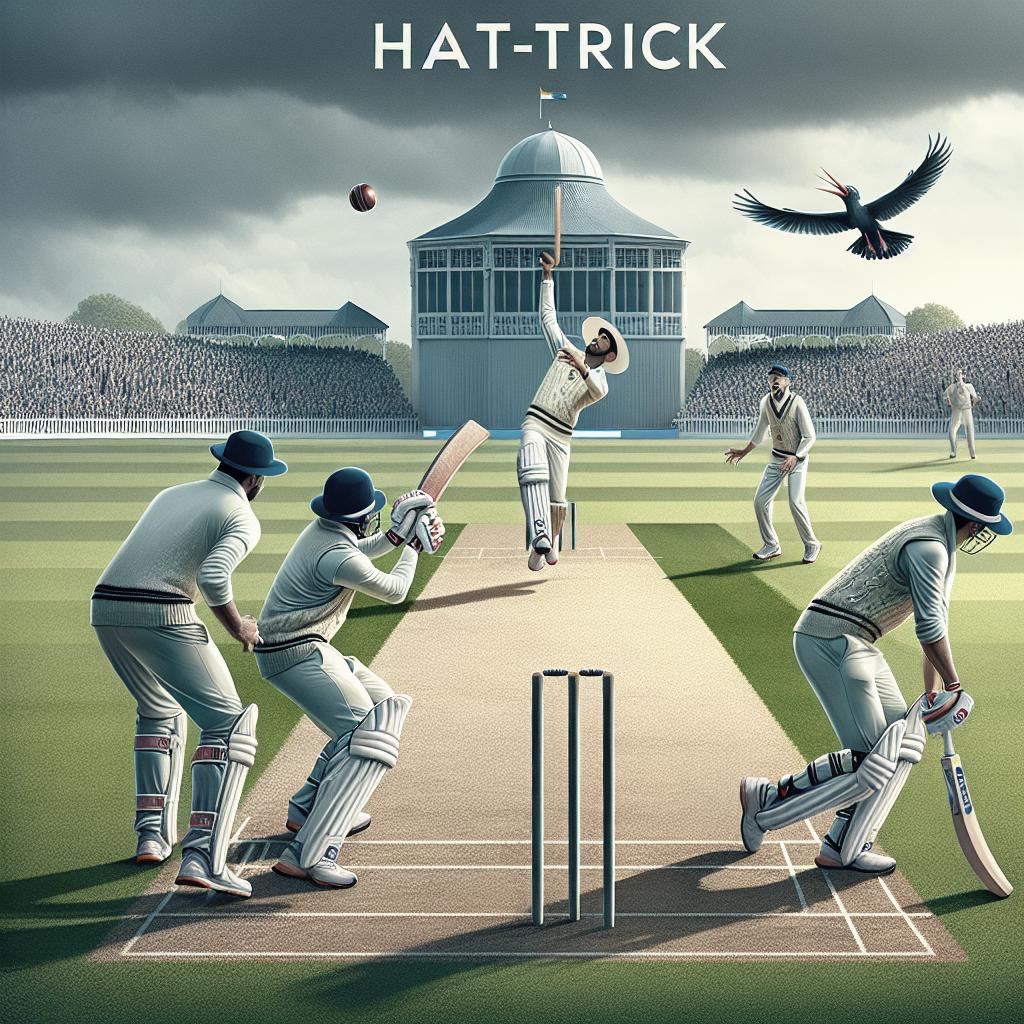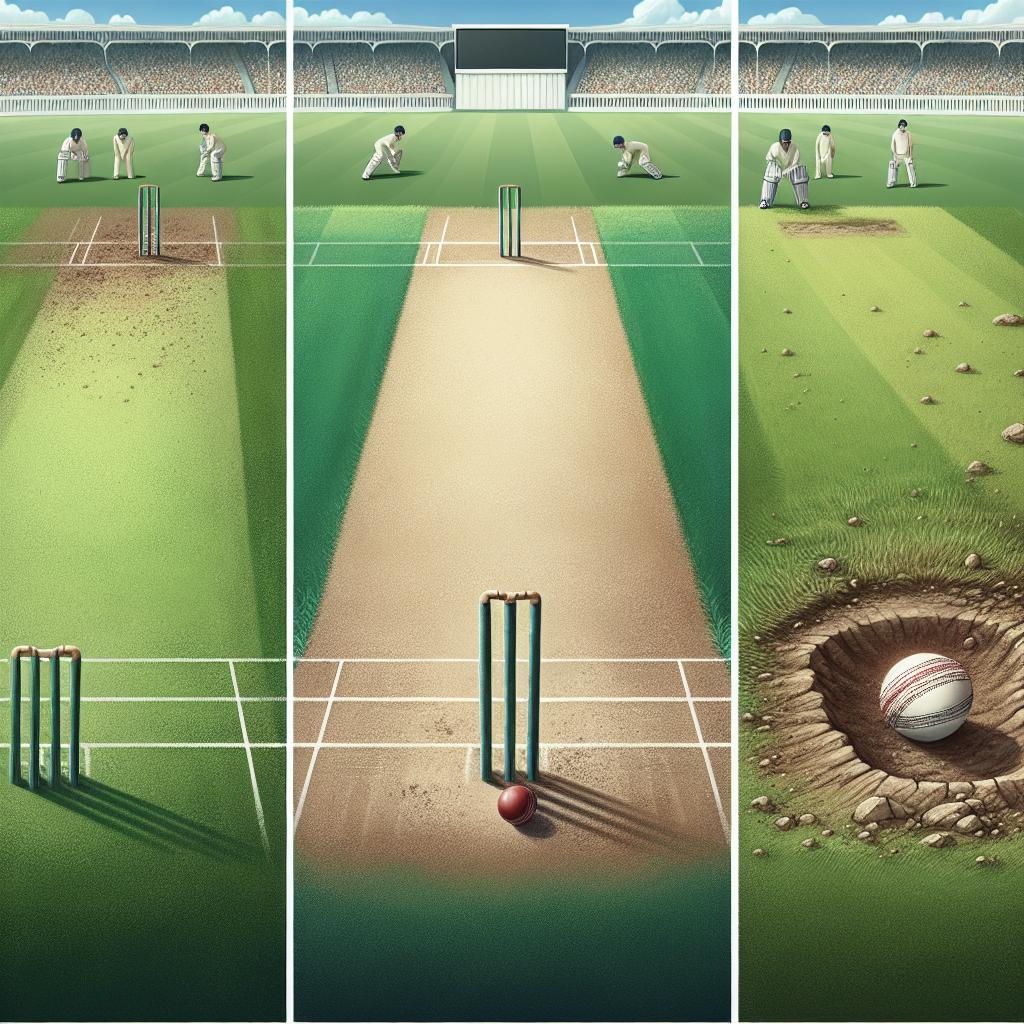<>
Cricket is a sport filled with many intriguing achievements, but perhaps none are as exhilarating as the hat-trick. A hat-trick occurs when a bowler takes three wickets on three consecutive deliveries, a remarkable feat that often turns the tide of a match. Though relatively rare, hat-tricks are celebrated landmarks in cricket history, contributing to the sport’s allure and complexity. This article delves deep into different types of hat-tricks, the historical roots of this incredible accomplishment, bowlers who have achieved double hat-tricks, and related tags that help in understanding this rare feat better.
What are the types of hat-tricks in cricket?
Hat-tricks can occur in various formats of cricket, including Test matches, One Day Internationals (ODIs), and Twenty20 Internationals (T20Is). Each format brings its own challenges, making the achievement even more laudable. In Test cricket, where the game is spread over five days, a hat-trick can occur amidst longer spells of bowling. This format tests the endurance and skill of a bowler, making a hat-trick here immensely satisfying. In ODIs, where bowlers have a limited quota of ten overs, making a hat-trick requires acute precision and smart bowling. The bowler must capitalize on the pressure of the limited-overs format to outsmart the batsmen. Lastly, in T20Is, the shortest and most frenetic form of the game, a hat-trick can change the game’s momentum almost instantly. The limited number of deliveries (24 per bowler) means that achieving a hat-trick is a testimony to the bowler’s ability to deliver under pressure. Besides these broad categories, there are also “hat-tricks across innings” where a bowler takes wickets on the last delivery of one over and continues by taking the next two wickets on the first two deliveries of the next over. This version is particularly difficult since it requires maintaining a high level of focus and skill across different overs.
Who claimed the first hat-trick in cricket?
The first-ever recorded hat-trick in the history of Test cricket was accomplished by Fred Spofforth of Australia against England on January 2, 1879. Known as “The Demon Bowler,” Spofforth created history in only the third Test match ever played. His delivery prowess and knack for outsmarting batsmen set the stage for future bowlers to emulate this remarkable feat. In ODIs, the first hat-trick was claimed by Pakistan’s Jalal-ud-Din against Australia on September 20, 1982. A relatively unknown figure in cricketing lore, Jalal-ud-Din’s accomplishment brought him instant fame and underlined the evolving nature of the shorter formats of the game. His hat-trick laid the groundwork for others to achieve this milestone in the 50-over format. The inaugural T20I hat-trick was notched by Australia’s Brett Lee against Bangladesh on September 16, 2007. Known for his blistering pace and accuracy, Lee’s hat-trick in the World T20 established him as one of the most lethal bowlers in the shortest format of the game. His achievement also signified the growing importance of T20 cricket, making hat-tricks in this format a prize accomplishment.
Bowlers with double hat-trick in cricket
One of the most incredible achievements in cricket is the double hat-trick, where a bowler takes four wickets in four consecutive deliveries. While exceptionally rare, it has been accomplished, adding another layer to the awe surrounding hat-tricks. One notable instance is Lasith Malinga of Sri Lanka, who clinched four wickets in four balls against South Africa in an ODI on March 28, 2007. Malinga, known for his unique slinging action, has solidified his standing as one of the greatest bowlers with his consistent performances and rare feats. Another cricketing legend, Rashid Khan of Afghanistan, achieved this rare milestone in a T20I against Ireland on February 24, 2019. Rashid’s customarily sharp leg-spin and unyielding accuracy left the Irish batsmen in tatters, earning him this rare accolade. It’s feats like these that make Rashid one of the most exciting talents to watch across all formats of cricket. While these examples showcase the pinnacle of bowling achievements, they also underscore the level of skill, focus, and mental fortitude required to achieve such remarkable feats. Double hat-tricks remain among the rarest and most treasured accomplishments in cricket.
Related tags:
Understanding the intricacies and context of a hat-trick involves familiarity with certain cricket terminology and concepts. Terms like “hwpressionary overs,” “economy rate,” and “bowling average” are critical. The hat-trick often hinges on mastering these elements of bowling, making the feat not just about three consecutive lucky deliveries but an exhibition of skill and strategy. Another important tag is the “match situation.” Hat-tricks often come at crucial moments in a game, turning the match’s tide. This highlights the importance of mental toughness and strategic thinking in a bowler’s arsenal. Lastly, “game formats” is another key tag. Understanding the nuances between Tests, ODIs, and T20Is is crucial as each format presents unique challenges, making a hat-trick in each context a distinctive achievement. ### Next Steps
| Section | Summary |
|---|---|
| Types of hat-tricks | Discusses hat-tricks in Test cricket, ODIs, T20Is, and across innings. |
| First hat-trick | Covers the first hat-trick in Test, ODI, and T20I formats, highlighting the bowlers who achieved them. |
| Double hat-trick bowlers | Profiles bowlers like Lasith Malinga and Rashid Khan who have taken double hat-tricks. |
| Related tags | Explores related cricket terminology essential to understanding hat-tricks. |


